BoomStick Review: $99 headphone upgrade
For a while, it seemed like the bitrate war might prove some sort of salvation for audio quality. Turns out, though, that the average listener can't actually hear much difference beyond a certain point, and that's even if they're willing to pay for higher quality downloads and streams.
BoomStick creator BoomCloud 360's answer is algorithms, not bitrates. Brainchild of former SRS Labs CTO Alan Kraemer, they tackle bass and spatial enhancement, along with high frequency optimization, to make existing music more listener-friendly.
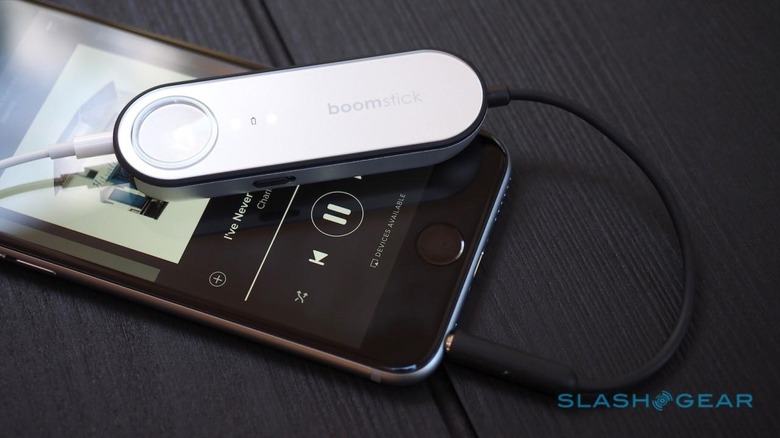
In fact, BoomCloud 360 has a whole catalog of algorithms, promising to make everything from in-car audio through to the floor announcements in elevators sound better. First to market, though, is one specifically for headphones.
The BoomStick is basically a thumbdrive-sized delivery system for that algorithm. On the one side there's a 5-inch cord with a 3.5mm plug; that goes into your phone, tablet, laptop, or whatever else you're listening to music from. On the other, there's a 3.5mm jack for your headphones.
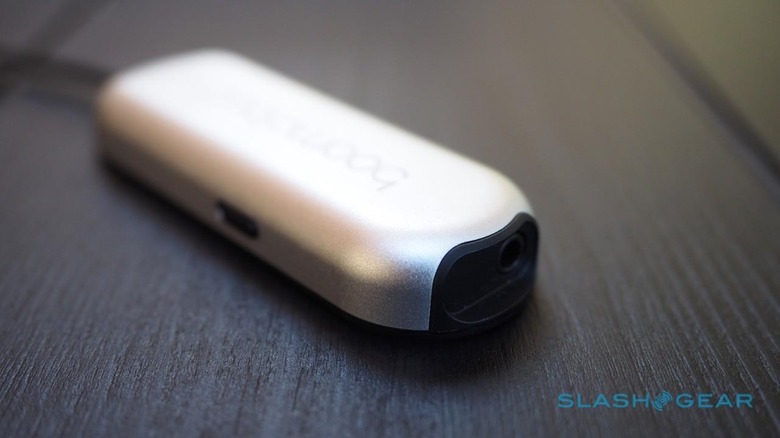
A power switch on the edge toggles the whole thing on or off; switched off, the audio just passes straight through, so even if the battery is dead you can still listen to your music. On the opposite side is a microUSB port for charging, and around 2hrs plugged in adds up to around 14hrs of use.
Why not an app? For that you can blame platforms like iOS, which don't allow third-party software to modify audio created by other apps. An external device was deemed the most headache-free option.
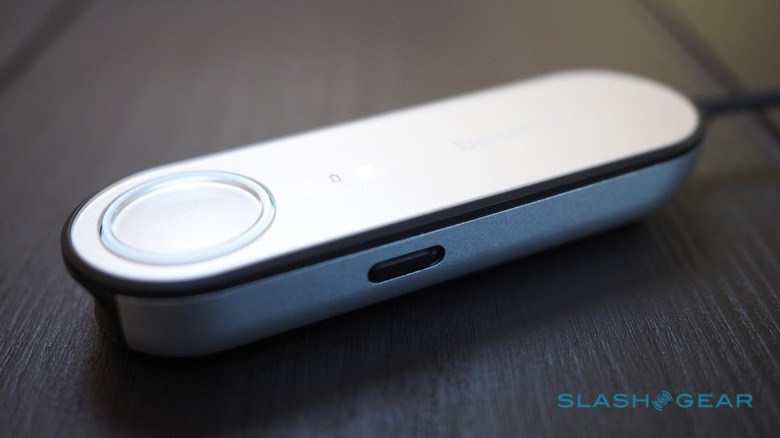
As a result, aside from the power switch you get a single control: the large circular button on the top. Press it once and you turn the algorithm on, lighting up the surrounding ring; press it again, and you turn it off. A small row of LEDs alongside it show power and battery status.
Actually, that's not quite the only function. Press and hold the button, and you activate "Boost" mode, a second version of the BoomStick's algorithm. That's intended for headphones that don't seal so well in the ears, Apple's EarPods being an excellent example.
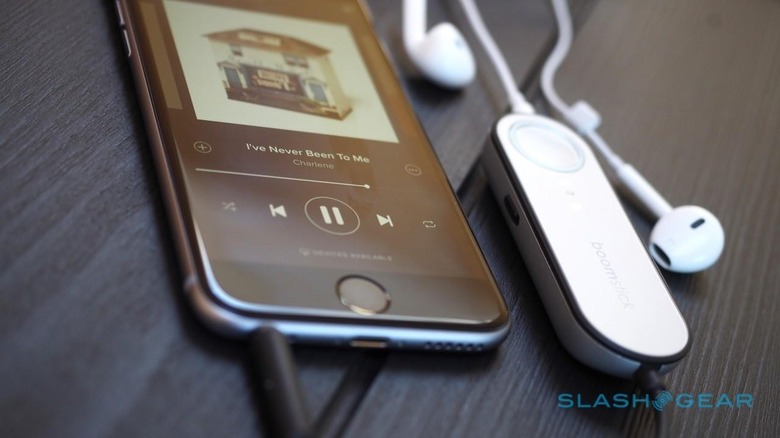
In fact, it's headphones like those EarPods – cheap headsets, typically bundled with a new smartphone or media player and rarely upgraded – which the BoomStick team believes will see the biggest benefit from the gadget.
It has the research to back that opinion up, too. BoomCloud 360 stopped gym-goers in multiple US cities and asked them to listen to their own music, with their existing headphones, but with the BoomStick in-between; 92-percent of those surveyed said they preferred listening with BoomStick turned on. Notably, the biggest increase in individual ratings were for the headphones bundled by Apple and Samsung, accounting for the most popular options in the country.
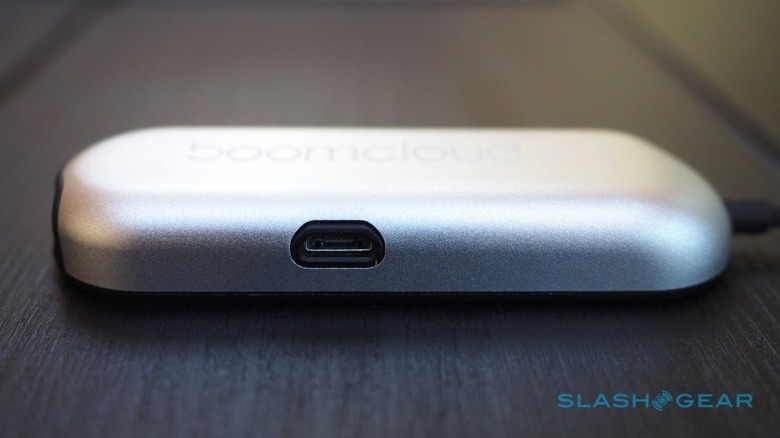
Music is, of course, subjective. The basic granular controls most playback methods offer – treble and bass, perhaps mids too – acknowledge that. The way I like to hear a track might differ considerably from how you prefer to hear it.
It's also tough to put into words what something like BoomStick brings to the experience; indeed, the company plans to put demo stations with working units at point-of-sale in locations like cellphone stores, so that potential customers can hear the difference rather than just read about it.
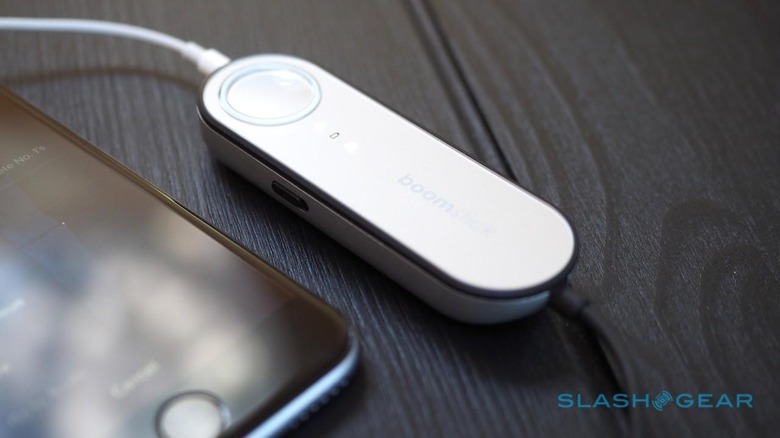
Still, having spent several weeks listening to music both with and without the BoomStick turned on, and with a selection of headphones, I'll do my best to at least give the flavor.
The soundstage is broader, with better separation between the various instruments and voices you're listening to. Bass gets emphasized, certainly, but the high frequencies get picked out as well, something you notice most with vocals and higher-pitched strings, such as violins.
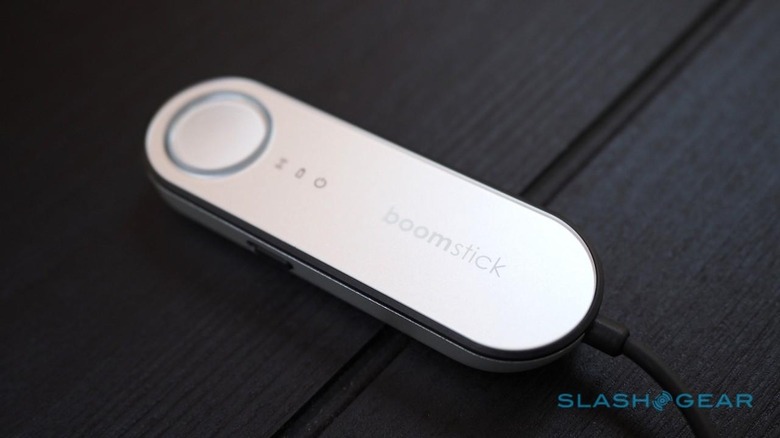
There's a slight volume bump, too; roughly equivalent, I've found, to hitting the volume-up button on an iPhone once. Interestingly, whereas the old-fashioned "bass boost" setting many media devices offered could often make classical music sound muddy, BoomStick doesn't suffer the same.
I'm trying to avoid words like "sparkle" and "lively" but they really do seem to apply. You arguably notice it more when you hit the button and turn off the algorithm, and when the music suddenly flattens out again and loses some of its energy.
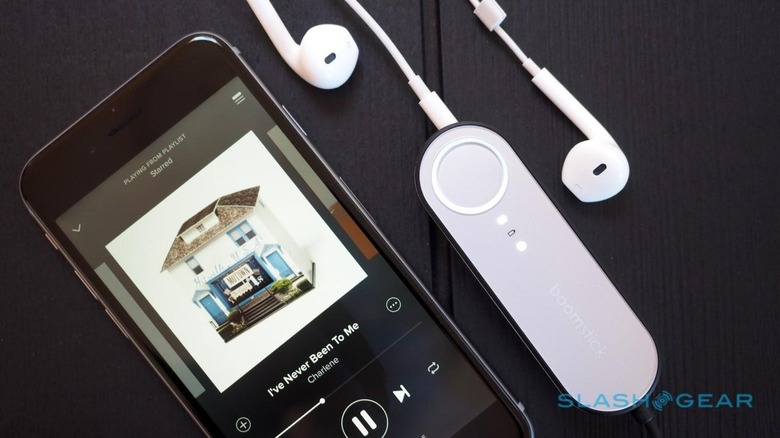
Tellingly, I noticed improvements both in cheap EarPods as well as with a set of custom-molded in-ear monitors.
At $99 – up for preorder today, and shipping in the Spring – BoomStick will set you back less than a new pair of decent headphones might. I'd always recommend that anybody buying a new phone should leave the default headset in the box and spend a little more on a reasonable aftermarket set. BoomStick now offers another route, and it's one sufficiently rewarding to the ears that even those who've upgraded their cans should consider granting it an audition.
MORE BoomCloud 360
